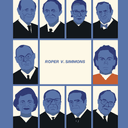
On April 26, 2018, the Equal Justice Initiative (EJI) opened the Memorial for Peace and Justice and its accompanying Legacy Museum, which tell the stories of the more than 4,000 men, women, and children killed by racial terror lynchings in the century following the Civil War, and trace the connections between slavery, segregation, capital punishment, and mass incarceration. The opening drew thousands of visitors from across the country, theatrical headliners, and a host of civil rights legends — including Congressman John Lewis and the surviving plaintiffs and lawyer who brought the lawsuit that ended segregated seating on public buses.
The memorial and museum arose out of the criminal defense work of the Equal Justice Initiative and its founder, Bryan Stevenson, first representing indigent prisoners on Alabama’s death row and later expanding to fight juvenile life sentences and other manifestations of mass incarceration. Stevenson said, “It really springs from that experience of representing people in courts and beginning to see the limits of how committed our courts are to eradicating discrimination and bias. I want to get to the point where we experience something more like freedom. … I don’t think we are going to get there until we create a new consciousness about our history.”
EJI’s research on lynchings, including the 2015 report, Lynching in America: Confronting the Legacy of Racial Terror, shows a clear link between lynchings and the death penalty. Counties and regions that today carry out the most executions are the same places in which lynchings were most likely to take place, and the ongoing racial bias in the application of the death penalty reflects the legacy of racial terror lynchings.
“[I] believe that capital punishment is the stepchild of lynching,” Stevenson said. “It was disproportionately used against people of color; it still continues to be shaped primarily by race.” As America’s global allies pressured the country to end lynchings after World War II, Stevens said, “lynchings moved inside. We still executed mostly black people after proceedings that were unreliable and unfair. We promised ‘swift justice,’ which was intended to be the same thing as lynching without the spectacle, without the optic, without the mob.”
Stevenson said he was motivated to create the memorial and museum because a discussion of the past is necessary to create a more just and equal society. “We haven’t created spaces in this country that tell the history of racial inequality, of slavery, of lynching, of segregation that motivate people to say, ‘Never again,’” he said.
The National Memorial for Peace and Justice, Equal Justice Initiative; Oprah Winfrey, Inside the memorial to victims of lynching, 60 Minutes, April 8, 2018; Kurtis Lee, ‘Capital punishment is the stepchild of lynching.’ Here’s what Bryan Stevenson hopes to address with a memorial honoring black people who were killed, Los Angeles Times, April 26, 2018; Jonathan Capehart, Bryan Stevenson wants us to confront our country’s racial terrorism and then say, ‘Never again’, The Washington Post, April 24, 2018; Andrew J. Yawn, Path of reconciliation: A walk through the nation’s first lynching memorial, Montgomery Advertiser, April 23, 2018; DeNeen L. Brown, ‘Lynch him!’: New lynching memorial confronts the nation’s brutal history of racial terrorism, The Washington Post, April 24, 2018; John Donvan, A New National Memorial To Victims Of Lynching, 1A, April 24, 2018. See History of the Death Penalty and Race.



